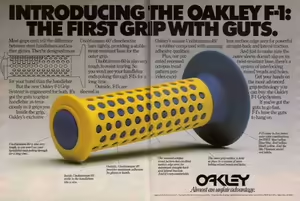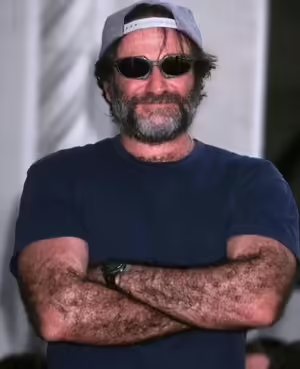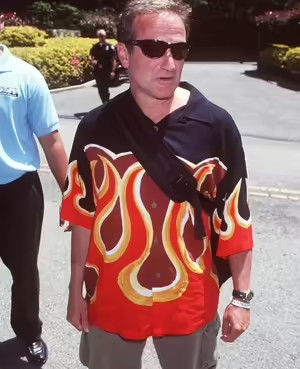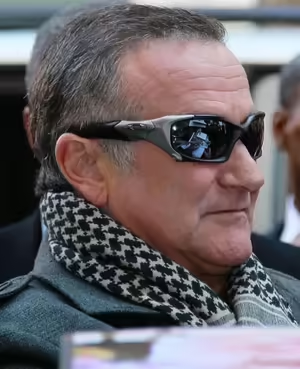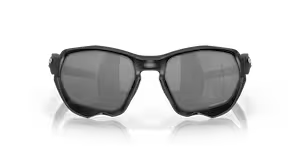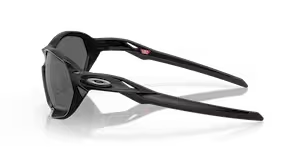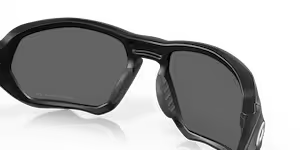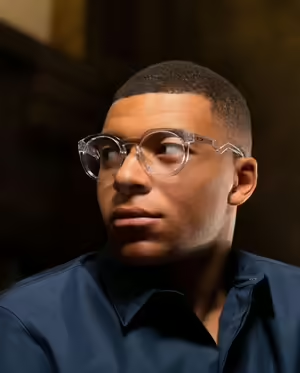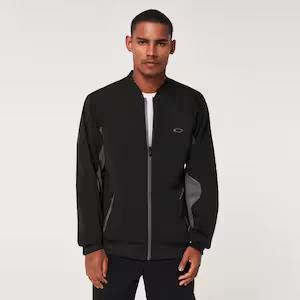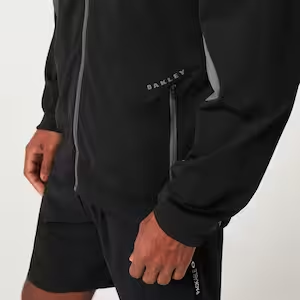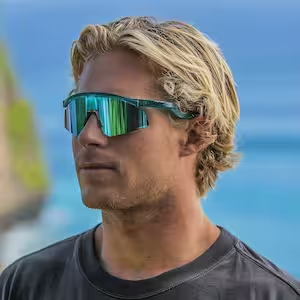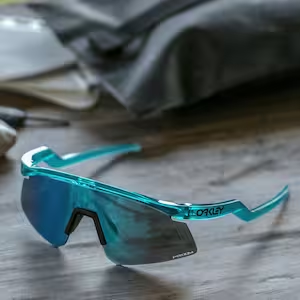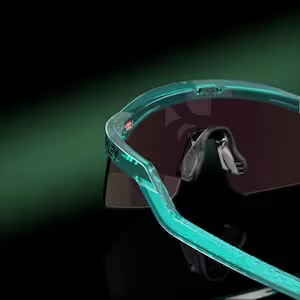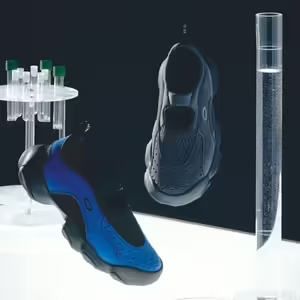Brand Oakley
| Oakley | |

|
|
|
|
|
| Founded | 1975 |
|---|---|
| Founder | Jim Jannard |
| Engineered | USA |
| Manufacturer country | USA |
| Head office | California, USA |
| Site | www.oakley.com |
Oakley is an American company specialising in the production of sports and casual goods, including sunglasses, sports eyewear, snowboard and ski clothing, shoes, backpacks and bicycle helmets. The company was founded by Jim Jannard in 1975 and was acquired by the Luxottica Group in 2007.
Oakley is known for its innovative design and advanced technologies. They have developed a range of unique lenses, such as Prizm, that offer enhanced colour and contrast perception for different sports and environmental conditions.
Oakley is the choice of many professional athletes in a variety of sports, including cycling, golf, skiing and motocross. Oakley is also known for working with athletes and sports teams to develop products and support them in competition.
The history of the Oakley brand
The Oakley company was founded by Jim Jannard in 1975 in his garage with initial investments of 300 dollars. The name "Oakley" came from Jim's English setter's name, "Oakley Anne". Jannard started with selling grips for motocross - the "Oakley Grip". His motorcycle grips were unlike any others available at the time. This material is still used to make the temples of Oakley glasses, many nose pieces of glasses, and now also watch straps. Oakley company continued to produce number plates, gloves, grips (handles that are put on both sides of the bicycle handlebar), elbow shields, chin guards, and goggles for BMX and motocross.
In 1980, Jannard released a pair of glasses called O-Frame. With the "Oakley" logo on the temple, the brand gained more and more recognition and fame in the sports industry. In 1983, Oakley began selling ski goggles.
The first Oakley sunglasses, Factory Pilot Eyeshades, were sports-oriented and goggle-like and were released in 1984. They were followed in 1985 by Oakley Frogskin, everyday sunglasses made in Japan.
The company went public in 1995, raising $230 million.
In early 1996, Oakley had a pricing dispute with the Italian company Luxottica, the world's largest manufacturer and retailer of eyewear. Luxottica stopped selling Oakley products in its stores, including Sunglass Hut, and Oakley's market value fell by 33%.
In 2001, Oakley acquired Iacon, Inc., which operated a retail network of Sunglass Designs, Sporting Eyes and Occhiali da Sole sunglasses.
In September 2004, Oakley signed a four-year agreement to produce eyewear designed by Oakley and Fox Racing.
Since 2004, Jannard has purchased large amounts of Oakley stock: $2 million in 2004, $16 million in 2005, and $4.6 million in early 2006, bringing his personal stake in the company to 63%.
In 2006, Oakley acquired Oliver Peoples Group, a manufacturer of high-end fashion eyewear (under the Oliver Peoples, Mosley Tribes and Paul Smith brands) for $55.7 million and Optical Shop of Aspen, a fourteen-store luxury eyewear retailer. Later in 2006, Oakley acquired Eye Safety Systems, Inc. (ESS), another major manufacturer of tactical eye protection, for $110 million.
On 21 June 2007, Luxottica announced its intention to acquire Oakley in an all-cash transaction valued at USD 2.1 billion, representing a 16% premium to the current share price. The deal was completed on 15 November 2007, making Oakley part of a portfolio that includes brands such as Ray-Ban, Persol and Vogue. Following the sale, the company's founder, Jim Jannard, became the founder of Red Digital Cinema. Luxottica's acquisition of Oakley was criticised as a possible violation of anti-trust laws. The move also resulted in Oakley's production being moved out of the US, with frames and many parts of the sunglasses being made in China.
In preparation for the successful rescue of thirty-three miners trapped for ten weeks in a Chilean mine in October 2010, a journalist covering the story contacted Oakley about donating sunglasses to the rescue, knowing that the miners would need eye protection after several weeks in the dark. Oakley donated 35 pairs of its Radar sports eyewear in specially selected tints.
In 2012, Oakley sponsored members of the US Olympic team and in the same year extended the partnership until 2020.
In August 2013, Oakley sold its REVO brand to Sequential Brands for $20 million. In November 2013, Oakley signed a multi-year agreement with Scuderia Ferrari.
In September 2015, Oakley closed the website of its Oakley Vault division, but continued to sell the brand at retail.
In March 2021, the Aston Martin F1 Team announced a partnership with Oakley.

Oakley brand innovation and technology
1981. Unobtainium®
Unobtainium® is the first innovative material patented by Oakley and used in some temple tips and nose pads. It provides maximum comfort by increasing grip with perspiration and keeping the frame in place without slipping.
1986. Plutonite®
Plutonite® is a durable and optically pure Oakley lens material that delivers maximum protection and superior vision. Tested in extreme conditions, it provides uncompromising protection from high-mass, high-velocity impact. This innovative lens material also blocks all wavelengths of the sun's ultraviolet rays. In keeping with Oakley's innovative DNA, Luxottica continues to invest in research and development, testing materials, technologies and advanced high-performance lenses.
1990. High Definition Optics® (HDO®)
Oakley High Definition Optics® (HDO®) deliver the clearest, sharpest and most precise vision of any lens, eliminating image distortion.
1996. O Matter™
Lightweight O Matter™ is Oakley's durable material that provides comfort and impact resistance with controlled flexibility. It won't warp over time like acetate. It's twice as strong and 25% lighter.
2009. Switchlock Technology
Switchlock technology lets you change lenses in seconds. It adapts to all conditions and keeps pace with changing light and weather.
Oakley Clothing & Accessories
Latitude Fz Fleece Jacket
The Latitude Bomber Fleece is a highly effective zip-up jacket that combines classic style with advanced technical features for versatile use.
The fleece features Oakley's Hydrolix moisture management system, a technological innovation designed to keep you cool, dry, and comfortable by effectively managing perspiration and body heat. These features are further enhanced by front zip pockets with mesh linings that not only provide convenient storage, but also enhance the breathability of the garment.
The construction includes an efficient cut that provides a smooth, tapered profile for the user. The design is complemented by a ribbed collar, cuffs and hem for a durable exterior and perfect fit.
The Latitude Bomber Fleece is constructed from 100% polyester for durability and easy care. The combination of design and technology in the Latitude Bomber Fleece demonstrates Oakley's commitment to creating garments that deliver performance and comfort in a variety of conditions.
Oakley Hydra Glasses
Hydra sunglasses from Oakley® pay homage to the surfing heritage of the Razor Blades line. This semi-rimmed frame has a protective lens and a contemporary trigger stem design that nods to Razor Blades' roots in surf culture.
Notably, the Hydra features the Oakley B1B logo on the temples, reinforcing the Oakley brand identity. The frame is made from BiO-Matter®, a plant-based biomaterial that contains at least 56% bio-based carbon, the equivalent of castor oil and fossil sources. This lightweight and durable frame provides a balanced fit and optimal head support.
Hydra features Oakley's Three-Point Fit System, designed for all-day comfort. The Razor Blades-inspired temple design adds to the overall comfort and fit.
To enhance the visual experience, Hydra features Oakley's patented Prizm™ lenses. These lenses are designed to enhance colour, contrast and detail, allowing the wearer to enjoy every activity to the fullest. Overall, Hydra exemplifies Oakley's commitment to combining innovative materials, comfortable design and high-performance lens technologies.

